Following a research line to ...
The assignment of the research conducted by L. Frija is to exploit the full potential of synthetic chemistry to create new structures, functions and chemical systems. Inspired by Nature's principles of molecular recognition, assembly, catalysis, transport and motion, the purpose is to design synthetic methods for novel biologically active molecules and catalysts.
The assignment of the research conducted by L. Frija is to exploit the full potential of synthetic chemistry to create new structures, functions and chemical systems. Inspired by Nature's principles of molecular recognition, assembly, catalysis, transport and motion, the purpose is to design synthetic methods for novel biologically active molecules and catalysts.
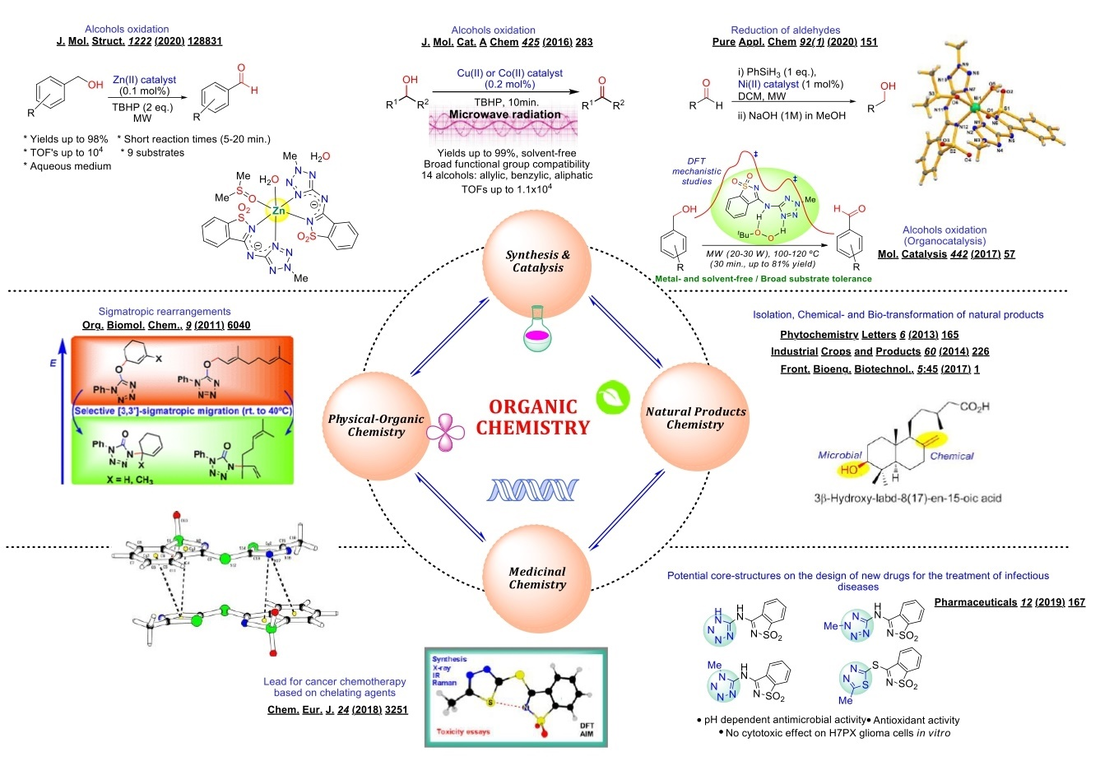
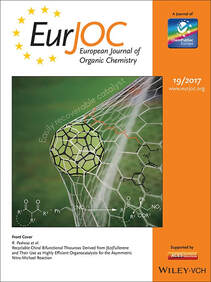
Thiadiazoles are among the privileged pharmacological building blocks due to their unique chemical properties for diverse biological and clinical applications. 1,2,4-Thiadiazole derivatives have recently attained a therapeutic and economic importance that they did not possess a few years ago, thus leading to growing interest in this class of heterocycles. Moreover, the importance of such molecules is not restricted to medicinal chemistry; they also perform well as N,S ligands in coordination chemistry or as important intermediates for fine-chemicals synthesis. In this context, the review paper published in EurJOC by L. Frija et al. systematizes the main advances in the synthesis of 1,2,4-thiadiazole-based compounds in the 2006-2016 period, disclosing some relevant applications of these compounds during that time.
Luís M. T. Frija*, Armando J. L. Pombeiro, Maximilian N. Kopylovich*; Building 1,2,4-Thiadiazole: Ten Years of Progress; Eur. J. Org. Chem., 2017, 2670-2682.
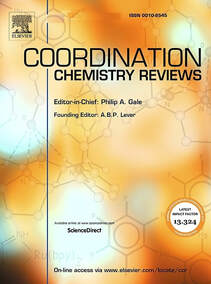
In this review, L. Frija et al. examined the potentialities of representative thiazoles, isothiazoles and thiadiazoles as ligands for the construction of various types of metal coordination compounds and metal–organic architectures with different complexities and uses. These heterocycles have been known for over a century and nowadays many of their derivatives possess significant applications indiverse fields such as medicinal- and agro-chemistry, catalysis, cosmetic industry, light harvesting, production of LEDs, photochromes, molecular switches, nonlinear optical materials, among others. Contrasting with the research that has been done in those areas, the coordination chemistry of these heterocyclic compounds still remains scarcely studied. However, even at this early stage, it is clear that the applications of their metal complexes as catalysts, drugs and functional materials have a promising future. An upcoming challenge for synthetic chemists will be to craft novel substituted ligands and test them in innovative coordination reactions with strategic metal nuclei. Some interesting future directions include the synthesis of organometallic structures liable to be used as dynamic catalysts, i.e. activated by external stimuli.
Luís M. T. Frija*, Armando J. L. Pombeiro, Maximilian N. Kopylovich*; Coordination Chemistry of Thiazoles, Isothiazoles and Thiadiazoles; Coord. Chem. Rev., 2016, 308, 32-55.
Luís M. T. Frija*, Armando J. L. Pombeiro, Maximilian N. Kopylovich*; Coordination Chemistry of Thiazoles, Isothiazoles and Thiadiazoles; Coord. Chem. Rev., 2016, 308, 32-55.
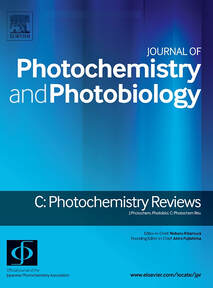
Tetrazoles exhibit a very rich photochemistry, strongly influenced by the nature of substituents in the tetrazolic ring. Photolysis of representative tetrazoles trapped in a rigid environment of solidified noble gases at cryogenic temperatures (usually argon at 10–15 K) results in photofragmentation of the monomeric species with a wide range of exit channels. Since the obtained fragments are generally confined to the matrix cage where they are formed, no subsequent cross-reactions involving species resulting from photolysis can occur, strongly reducing the number of possible photoproducts in comparison with gas phase or solution studies. These conditions introduce a useful simplification for the interpretation of the reaction mechanisms and enable spectroscopic characterization of novel and/or highly reactive molecules. In this review, L. Frija et al. provide an updated report on the photolysis of matrix-isolated tetrazoles, focusing on the scope and usefulness of this methodology for generation of rare molecules and investigation of photocleavage pathways. Special emphasis is placed on mechanistic interpretations and characterization of rare molecules and on the relevance of conformation and tautomerism on the photochemistry of the studied compounds.
Luís M. T. Frija*, M. L. S. Cristiano, A. Gómez-Zavaglia, I. D. Reva, R. Fausto; Genesis of Rare Molecules using Light-induced Reactions of Matrix-Isolated Tetrazoles; J. Photochem. Photobiol. C: Photochem Rev., 2014, 18, 71-90.
Luís M. T. Frija*, M. L. S. Cristiano, A. Gómez-Zavaglia, I. D. Reva, R. Fausto; Genesis of Rare Molecules using Light-induced Reactions of Matrix-Isolated Tetrazoles; J. Photochem. Photobiol. C: Photochem Rev., 2014, 18, 71-90.
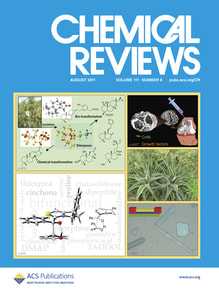
Along the years, diverse synthetic strategies involving naturally occurring labdane-diterpenes, such as sclareol, sclareolide, labdanolic acid, abietic acid, larixol, or ozic acid, have been explored, with the purpose of establishing attractive methodologies for the production of fine chemicals, including pharmacologically active compounds, their synthetic precursors, and some interesting naturally occurring substances.
The use of a series of labdane-type diterpenes as starting materials for the preparation of numerous valuable molecules is highlighted in the review paper published in Chemical Reviews by L. Frija et al.
The significant advances in the field of chemical and biological manipulation of labdanes documented in this manuscript demonstrate the numerous useful transformations that these undergo, and the need for continued work in this area. It is hoped that this review will not only inspire future researchers to make new discoveries, but also drive others to employ natural molecular resources as synthons in their own research.
Luís M. T. Frija*, Raquel F. M. Frade* and Carlos A. M. Afonso*; Isolation, Chemical and Bio-transformation Routes of Labdane-type Diterpenes; Chemical Reviews, 2011, 111, 4418-4452.
The use of a series of labdane-type diterpenes as starting materials for the preparation of numerous valuable molecules is highlighted in the review paper published in Chemical Reviews by L. Frija et al.
The significant advances in the field of chemical and biological manipulation of labdanes documented in this manuscript demonstrate the numerous useful transformations that these undergo, and the need for continued work in this area. It is hoped that this review will not only inspire future researchers to make new discoveries, but also drive others to employ natural molecular resources as synthons in their own research.
Luís M. T. Frija*, Raquel F. M. Frade* and Carlos A. M. Afonso*; Isolation, Chemical and Bio-transformation Routes of Labdane-type Diterpenes; Chemical Reviews, 2011, 111, 4418-4452.
